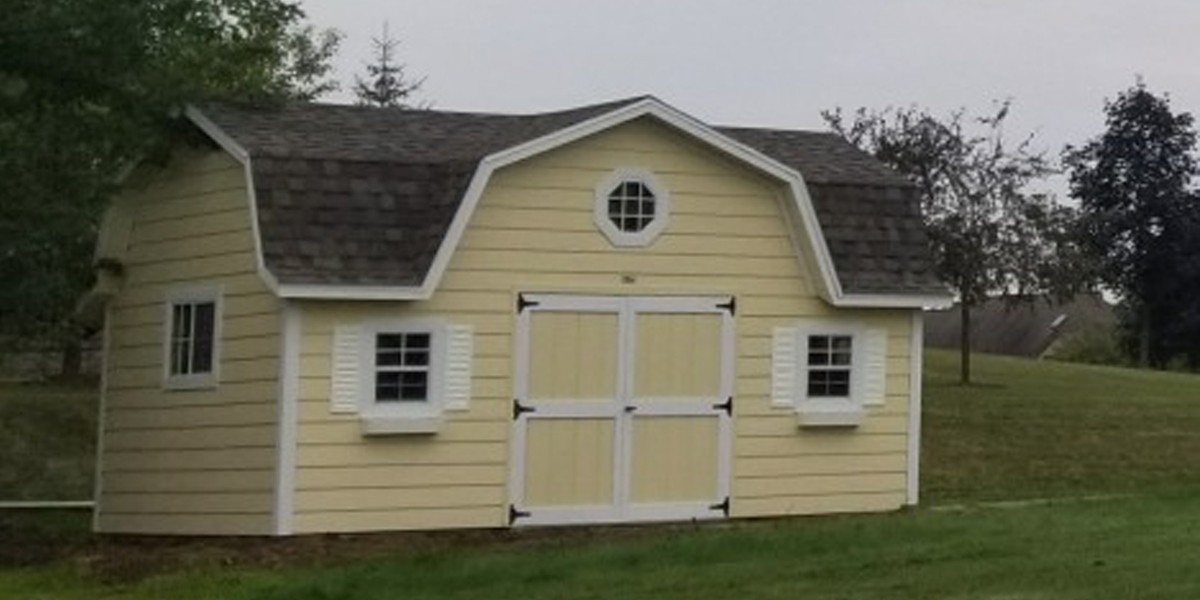A shed isn’t just a storage corner anymore. It’s part of your home’s personality, and like any structure exposed to weather, it eventually shows signs of ageing. The siding of your shed plays a key role in protecting it from rain, wind, sunlight, and temperature changes. If your current siding has started to look tired or weak, this might be the perfect time to upgrade to a steel siding shed.
Steel siding not only makes your shed stronger but also gives it a cleaner, modern look that lasts for decades. But how do you know when it’s time to make the switch? Let’s go over the top warning signs that show your shed needs a steel siding upgrade this year.
1. Visible Cracks, Warping, or Peeling Paint
If you notice cracks or peeling paint, your shed is trying to tell you something. Wood and vinyl sidings often react badly to weather changes. They expand and contract with temperature, leading to warping or splitting. Over time, this leaves gaps where moisture seeps in.
Why it matters:
- Water can rot wooden panels.
- Warping creates air leaks, letting heat escape.
- Peeling paint often hides deeper structural problems.
Steel siding eliminates this issue entirely. It doesn’t crack, warp, or peel, even after years of harsh sunlight or freezing winters. It gives your shed a permanent finish that stays smooth and durable.
2. Mold, Mildew, or Rot Spots
Moisture is the silent destroyer of sheds. When you see green or black spots forming along the base or corners, it’s a sign that your siding is no longer sealed properly. Wood and fiberboard absorb moisture easily, leading to rot and mold buildup that spreads fast.
How steel siding helps:
- It resists moisture completely.
- It prevents mold or mildew from sticking.
- It doesn’t require constant repainting or waterproofing.
Upgrading to a steel siding shed means saying goodbye to constant scrubbing, repainting, or worrying about rot spreading under the surface.
3. Fading or Dull Appearance
Fading is more than just an aesthetic problem. When siding fades unevenly, it often means UV rays have broken down the material’s protective layer. Over time, the surface becomes brittle and prone to cracks.
Steel siding retains its color and shine for years. With a variety of finishes and shades available, you can pick something that matches your home perfectly. It’s the easiest way to make your shed the best exterior shed in Wisconsin.
4. Rising Maintenance Costs
If you find yourself spending time and money on repainting, replacing panels, or patching holes, that’s a big sign your shed’s siding is past its prime. Wooden siding especially needs annual care to keep it from rotting or attracting pests.
Steel siding, on the other hand, is nearly maintenance-free.
You won’t need to:
- Repaint every few years.
- Treat the surface for insects.
- Replace panels due to weather damage.
In the long run, the cost of steel siding easily pays for itself by saving you time, money, and effort.
5. Pest Damage or Holes
If you’ve seen small holes or heard scratching noises from inside your shed walls, you’re not imagining things. Termites, ants, and rodents love traditional wood siding because it offers warmth and shelter. Once they burrow in, the damage spreads quickly and weakens the structure.
Steel siding is pest-proof. Bugs can’t chew through it, and rodents can’t make nests inside it. Upgrading ensures that your shed remains solid, clean, and safe from unwanted guests.
6. Rusted Nails and Loose Panels
When nails start rusting or panels pull away from the structure, it’s a strong indication that your siding’s integrity is compromised. Water has likely found its way beneath the surface, creating corrosion and weakening the entire setup.
Steel siding systems today come with rust-resistant coatings and hidden fasteners that stay secure and protected from weather elements. This not only keeps your shed’s frame safe but also gives it a sleek, seamless look.
7. Poor Energy Efficiency
If your shed feels hotter in the summer and colder in the winter than it used to, your siding’s insulation has likely worn down. Traditional siding materials lose their ability to regulate temperature over time.
Steel siding can be insulated with advanced materials that help control internal temperature. Whether you use your shed for storage, work, or hobbies, this upgrade can help you keep the interior comfortable year-round.
8. Outdated Look That Doesn’t Match Your Property
Sometimes, your shed may still function fine but simply doesn’t match your property’s updated exterior. A weathered shed can make your backyard look incomplete or outdated.
Steel siding instantly modernizes the look of any structure. Its clean lines and color options can transform an old wooden shed into a stylish, contemporary feature that complements your home perfectly.
When your shed looks this good, it becomes more than just a storage spot—it becomes an attractive part of your outdoor design.
9. Structural Weakness or Leaks
If water seeps inside after rain or snow, your siding has likely developed cracks or separation points. You might also notice soft spots in the walls or damp corners. These are serious signs that your shed’s siding is no longer doing its job.
Steel siding creates a watertight shield around your shed. It stands strong through heavy rain, wind, and snow without bending or cracking. That means better protection for whatever you store inside—tools, equipment, or furniture.
Why Steel Siding Is the Smartest Upgrade
When you add it all up—low maintenance, long lifespan, modern appeal, and unbeatable protection—steel siding clearly stands out as the smartest exterior upgrade. It’s not just about fixing old problems; it’s about future-proofing your steel siding shed in Wisconsin.
Whether you use your shed for tools, storage, or as a creative space, switching to steel siding keeps it strong, stylish, and efficient for years to come.
Final Take:
Sheds aren’t just about storage anymore. They’re a reflection of how you care for your space. At MW Sheds, we turn that vision into reality. When you choose our steel siding shed options, you’re not just upgrading a structure, you’re upgrading peace of mind, durability, and design all at once.
Our sheds are built to handle everything your Wisconsin weather throws at them while looking sharp season after season. If you’ve been noticing any of these warning signs, this is your signal to make the smart move now.
It’s time to stop patching the old and start building the strong. Reach out to us today to find your best exterior shed upgrade.
FAQs
1. How do I know when my shed siding needs to be upgraded?
Cracks, peeling paint, moisture, pest damage, and rising maintenance costs suggest your shed siding needs upgrading soon.
2. Is steel siding better than wood for outdoor sheds?
Steel siding resists weather, pests, fading, and moisture, offering longer durability with minimal maintenance compared to wood.
3. How long does steel siding on a shed typically last?
Steel siding often lasts decades thanks to rust resistance, strong coatings, and excellent weather protection.
4. Does steel siding improve shed insulation and comfort?
Insulated steel siding helps regulate interior temperature, reducing heat loss and improving year-round comfort.
5. Can upgrading to steel siding increase shed value and appearance?
Yes, steel siding gives modern curb appeal, enhances durability, and boosts long-term value significantly.

